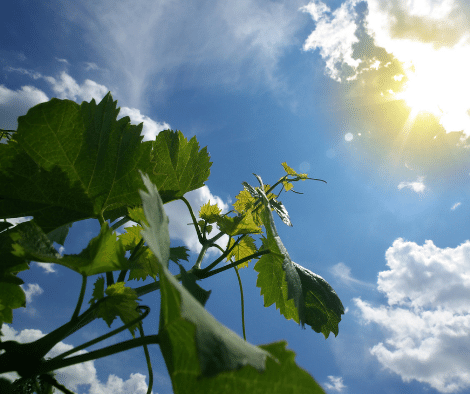There are few better places to be than the vineyard in the first warm spring days of the year, with the warmth signifying renewed growth and moving towards flowering and, ultimately, fruit.
At this stage in the year, considerable time and expenditure in getting the vineyard in the best possible shape is necessary, prior to sap rising in the vines and budburst.

However, spring can also be one of the most worrisome time of year, as a late season frost can be the difference between having a crop or no crop at all.
With the vineyard severely affected by frost in 2020, I have done a few things a little differently this year. Firstly we pruned as late as I dared to, only really beginning to meaningfully prune in March, with the effect being that the vines would remain dormant for as long as possible and budburst delayed.
Timing is crucial; wait too long, and you run the risk of knocking buds and shoots off when you do come to prune and tie-down, so caution should be used with this approach. I also delayed tying down, as with buds positioned higher prior to tying down, they have more chance of survival during any later cold weather. Lastly, I have left sacrificial vines. This should have two outcomes: firstly, to potentially delay bud burst further as there is more vine for sap to rise through. Secondly, if the vineyard site is affected by frost, the sacrificial vines could hopefully be tied down in place of frosted vines.
There are other methods I could try, like anti frost sprays or use vineyard candles (bougies), but from my own experience, frost at the wrong time of year for grape growing is rarely a one day occurrence – it tends to be over a few days in a row – which would render sprays and bougies uneconomical options pretty quickly. Therefore, the cultural methods described earlier, in my opinion, offer the best chance of solution for colder spring nights.
Winery
In the winery, we are gearing up for bottling both still and sparkling wines. This means a lot of cleaning and attaining sterility. For cleaning, I have switched to enzybrew 10 – an organic enzyme cleaner. It is a much less harsh cleaning product, that’s safer for me and for the environment.
For sterility, I still think the best solution is peracetic acid (PAA), ensuring that I can guarantee as much as possible sterility in my bottling line.
Although we do use steam in the winery to sanitise, we also double up with PAA to ensure that the line is sterile. The great thing about PAA is once it reaches the required strength, the process is instantaneous, which makes it a far most cost-effective way to guarantee sterility, then using hot water or steam.
I would also recommend investing in an ATP reader. By taking ATP readings at difficult to reach parts of your bottling set-up, it offers a very good indication that you have achieved sterility and can proceed to bottle. Having previously had a bottling business where we bottled approximately 3 million bottles of beer and cider, I would never just rely on steam or hot water for sterility.
Please keep an eye out for more wine content coming to blog throughout Spring.
If you would like to discuss your own winemaking process and prepare for the year ahead, you can email Kieron at kieron.atkinson@murphyandson.co.uk
To view and shop our winemaking store, please click here. We have an extensive range of MLF, Enzymes, Yeast and Inactivated yeasts and more to help you get from soil to cellar.

